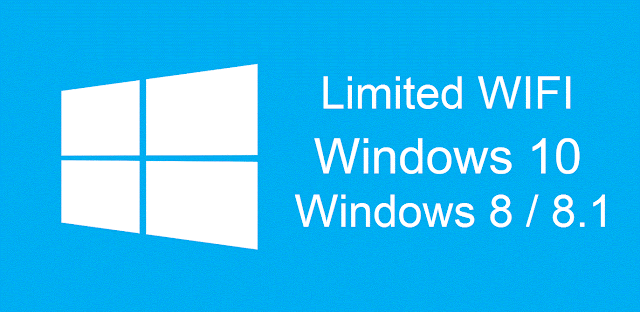Windows 8 Limited Wifi
Has the Windows 8.1 update 1 solved the limited wifi problem seen before the update? I have an Asus notebook Q550 and when I upgraded to 8.1 about 3 months ago, I was forced to downgrade back to Windows 8 due to the limited wifi problem.
When trying to set up or make network connections on a Windows computer, you may encounter an error message. This might result from any of several different technical glitches or configuration problems on the computer or on the path between the computer and the rest of the network.
The error may look like one of these messages:

How to Troubleshoot and Resolve 'Limited or No Connectivity' Errors
Windows 8 Wifi Limited Issue

First, start with this How to Fix Common Internet Connection Problems guide.
If you don't have luck there, come back to this page and start with Step 2.
Restart your computer. This is an extremely common step for nearly any computer problem, and since the network issue may be tied up in your computer software, you should start with a reboot.
You may have already tried this step, in which case you can move down to the next one.
Reboot your router or modem. Note that we're saying to reboot, not reset. Rebooting is just powering it down and then turning it back on while resetting the router means to restore all of its settings back to default - a step that's a bit more destructive than what we're after right now.
If restarting your router doesn't work at all, or is only a temporary solution, continue with Step 4.
If connecting to your network using an Ethernet cable, your cable may have failed. First, unplug the cable and then reattach it. Then, if you need to, temporarily replace your network cable with a new or different one to see if the problem has to do with the cable.
Run this command in an elevated Command Prompt to reset the Windows TCP/IP stack to its original state, a step that often fixes lots of network related issues:
Here are some other netsh commands you can try if resetting the network adapter didn't fix the network error. Also in an elevated Command Prompt, enter the first command, then the second, then the third, in that order, pressing Enter after each of them.
Then, run this command to verify that the settings were disabled:
If on Wi-Fi when you see this error, it's possible that the network adapter is going to sleep to conserve power. You can stop this from happening in the Power Management tab of the adapter.
Here's how: Find the Network and Sharing Center in Control Panel. Right-click the Wi-Fi connection, go into Properties, then hit the Configure button, and find the Power Management tab. Uncheck the option that lets the computer turn off the device to save power.
If your network is using DHCP, first find your local IP address.
If the IP address is set to a static IP address, you need to change the adapter's settings so that it obtains an address automatically from the DHCP server. Make sure that DHCP ends up enabled and that there isn't a specific IP address recorded for the adapter. If the local IP address your computer is using, starts with 169.254, it means it's invalid and isn't obtaining a useful address from the router. Try running the commands ipconfig /release and then ipconfig /renew in a Command Prompt.
Try updating the device driver for the network card. An outdated card or corrupted driver might be the problem.
If Windows prompts you to have it try to fix the connection itself, then agree to that and run the Network Troubleshooter or Network Repair utility (they're called different names depending on your version of Windows).
If you're connected over Wi-Fi and the router is using wireless security, your WPA or other security key may not be set properly. Login to your router and check the wireless security configuration on your computer's network, and update if it necessary.
If there's still no connection, unplug your router and connect the computer directly to your modem. If this configuration works, and you no longer see the error, your router might be malfunctioning.
Contact the router manufacturer for additional support. However, if the error remains and the network still appears to be down, contact your internet service provider for support - the problem may lie with them.